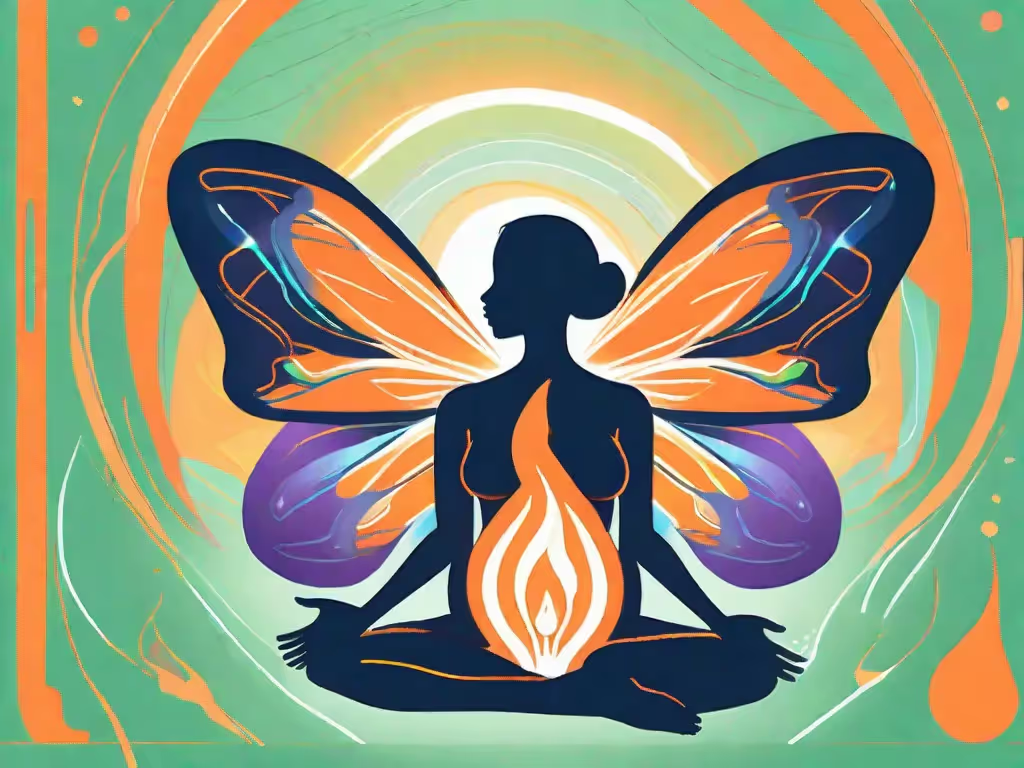If you are new to yoga, there are many different styles and techniques. Classes can range from a fast-paced vinyasa class that will increase the heart rate to a yin yoga practice that systematically slows down the body's rhythms and softens muscle tension through deep, mindful stretches.
Bedtime yoga and its connection to deep, restful sleep is about finding a practice that is focused on the restorative aspects of yoga, including slower breathing, deeper meditations, longer holds in yoga poses, and an emphasis on the value of savasana (corpse pose), the final resting pose, which is a yogic meditation.
The surge in the popularity of bedtime yoga for better sleep is attributed to its ability to improve sleep quality, reduce fatigue, and support those with anxiety and depression as well as those who suffer from insomnia. The National Library of Medicine states that sleep problems can cause impaired daytime functioning. This means a bedtime yoga practice that supports better-quality sleep also supports focus, clarity, and peace of mind during the day.
This article will cover:
- the fundamentals of a bedtime yoga practice
- yoga bedtime routines for beginners and seasoned practitioners
- A brief about how this guide will help the readers
- how to use yoga for sleep by releasing the day and receiving restoration
- how to find a yoga routine that works for you and resources to help you sustain your practice
- a few relaxing exercises to get you started
The Fundamentals of Yoga for Sleep
In a National Health Interview Survey (NHIS), it was reported that over 55% of yoga practitioners reported improved sleep. The key principles and philosophy behind yoga for sleep are connected to yoga's ability to help a person find a mind-body connection and reduce stress through mindful movement and breathing. The relationship between yoga and sleep science is still emerging, but the results of yoga practice on a good night's sleep may be connected to the fact that yoga also helps reduce stress. According to the same survey, 85% of yoga users reported reduced stress, which impacts a person's ability to fall asleep and find deep sleep.
Pre Bedtime Yoga Practices
You don't need to practice an hour a day before bed to get drastic benefits. A few pre-bedtime yoga practices can be an excellent place to begin. Let's explore a few poses and breath practices that can help you wind down at the end of the day.
Child's Pose (Balasana): This is a simple pose in which you sit on your heels and bend forward until your forehead reaches the ground. Balasana is a very restorative pose. Many yoga classes begin in Balasana, and you can get into this pose by gently sitting on your heels and taking a few breaths with your hands resting gently on your thighs. Begin to bend forward, allowing your arms to either come out in front of you or rest along your sides. If your head needs a lift, grab a cushion or yoga block to place under your forehead. Take 10-20 mindful breaths in this pose.
Butterfly Pose (Baddha Konasana): This pose relieves back pain and stretches the groin area. Begin by sitting on the ground with your legs bent so the knees are pointing outward and the soles of the feet are touching. You may notice that your knees come off the ground, which is fine. Gently hold your feet, keeping your thighs out, and with a straight spine, begin to take 10-20 mindful breaths, focusing on the slow inhale and exhale. In this pose, you can also gently allow the knees to bounce.
Reclining Bound Angle Pose (Supta Baddha Konasana): Supta means reclined, so this posture is a reclined butterfly. You can begin this pose by lying down on your spine. Allow the feet to come together as you bend your knees and allow them to fall to either side. Bring one hand to your heart and the other hand to your stomach and begin to focus on the breath. If your knees need support, feel free to prop them up with a few cushions. Just allow the hips to open gently as you focus on how the belly and chest lift with the inhale and gently release with each exhale. Stay here for 10-20 slow breaths.
Supine Spinal Twist (Supta Matsyendrasana): This pose is done lying down. You can begin by bringing your knees into your chest and rocking back and forth. Extend your left leg, hugging your right knee in, and gently guiding that knee across the body into a gentle twist with your left hand on top of the knee. Allow your right arm and head to extend the other way, and look over the right arm. Take a few deep inhales and exhales, then find the position on the other side by pulling in your left knee and extending your right leg. Twisting postures help relieve tension along the spine, and allowing your body to settle into the pose can offer restorative and calming benefits.
Corpse Pose (Savasana): This is the ultimate mindfulness pose that takes place at the end of most yoga practices. It offers the body an opportunity to relax. Begin by lying down on your back. You can always pull your knees into your chest and rock right to left to release tension in the lower back. Then extend your legs and let the feet splay open. Allow the palms to be face up and the shoulders to be tucked in so the back can be flat on the mat or floor. You can add props to this pose, such as an eye mask or a blanket to stay warm. In this pose, allow your breath to be natural and your attention to be on letting go. You can stay here for as long as you'd like. When you are ready to come out of corpse pose, roll over to one side or the other and bend your knees. Gently push yourself into a seated pose and take a few final breaths to close your practice.
Building Your Bedtime Yoga Routine
An easy-to-follow yoga bedtime routine means finding poses that work for your body. One of the best guidelines to follow if you are new to yoga or to any bedtime yoga poses is to stretch your body to the extent that your breath is not strained. Bedtime yoga should be about calming the body as much as stretching the body. As you continue to practice, you may want to stay in each position longer. By giving yourself time in each pose to feel its effects fully, you allow your body to find its natural, restorative potential. Adding a mindful meditation to the end of your practice can augment your practice even more.
When looking to resources online for bedtime yoga routines, it is important to find what will support consistency, especially if you are looking to find sleep after suffering from insomnia or a lack of quality sleep for an extended amount of time.
Join me at Aura for meditative tracks and a community that will support your bedtime yoga practice.



.webp)







.avif)

%20(1).avif)


.avif)
.avif)
.webp)


.avif)


















































































































.avif)

















.svg)








